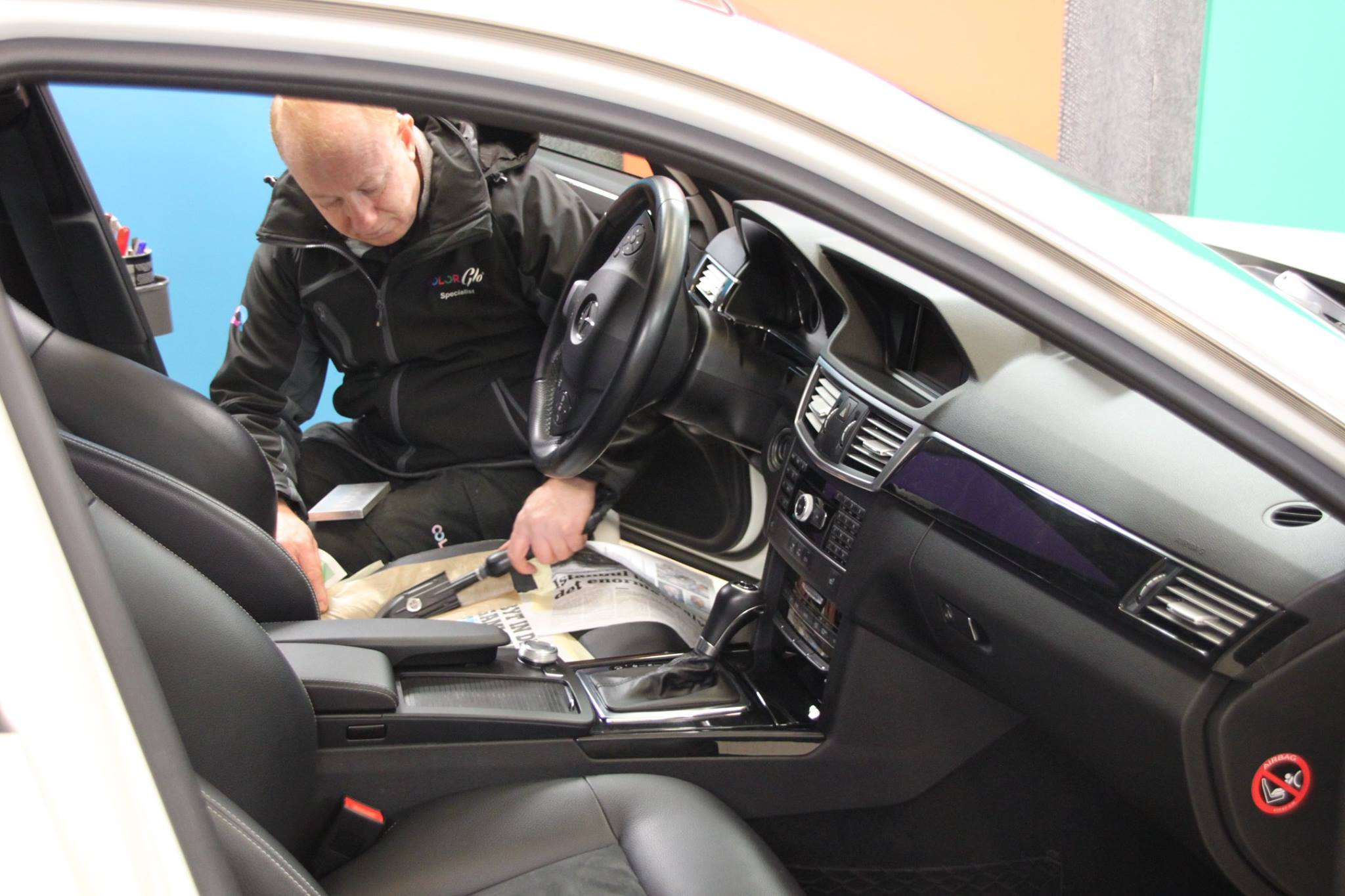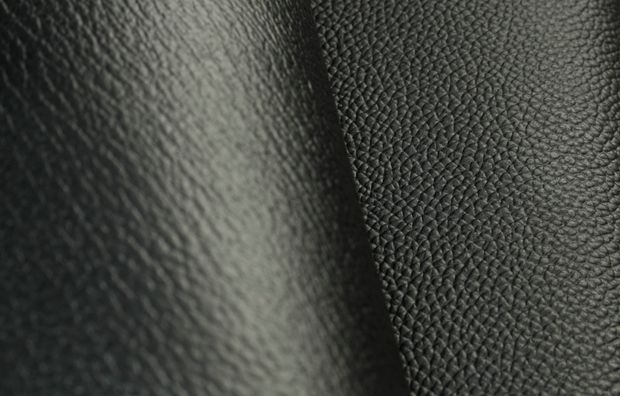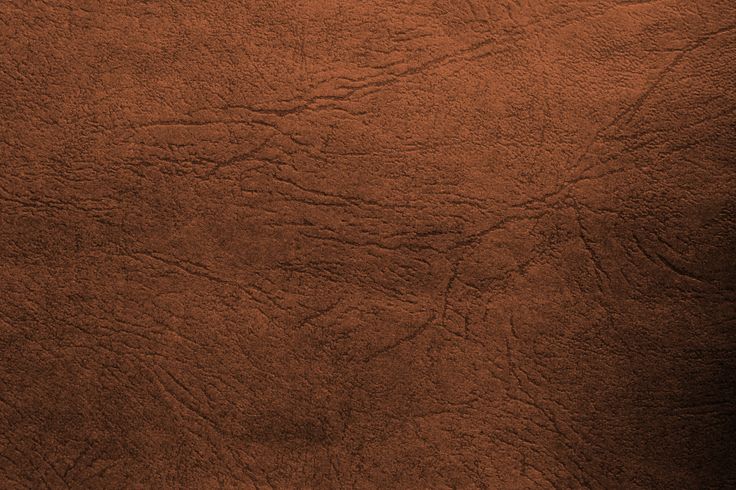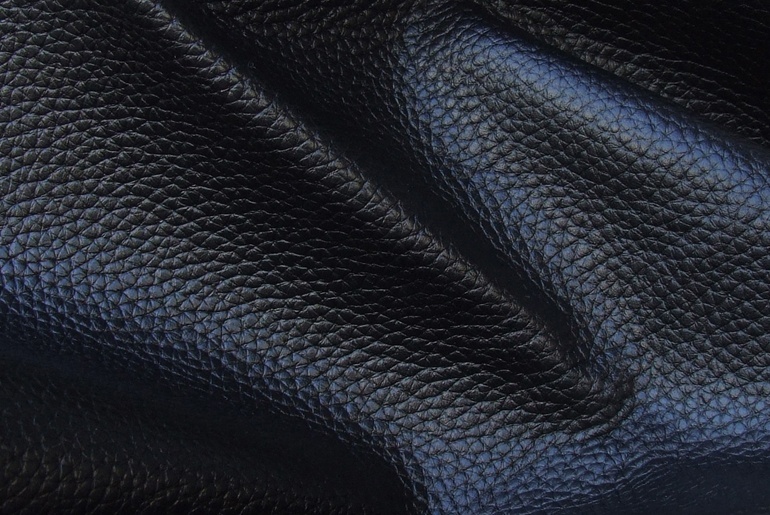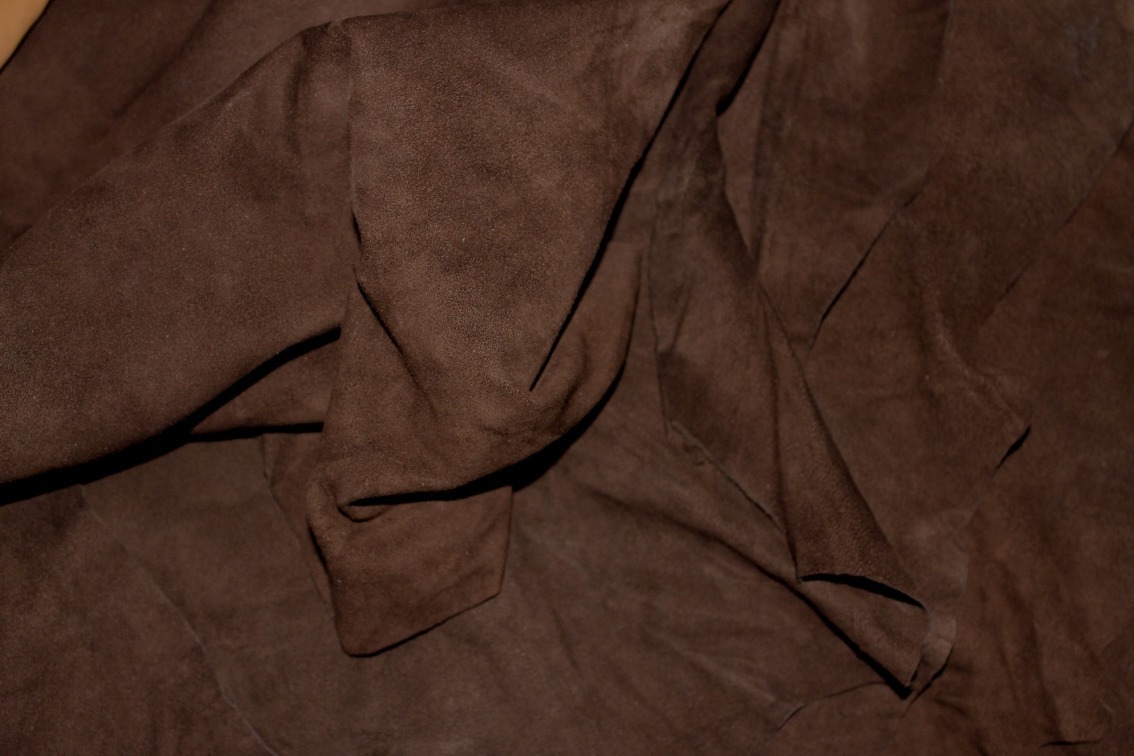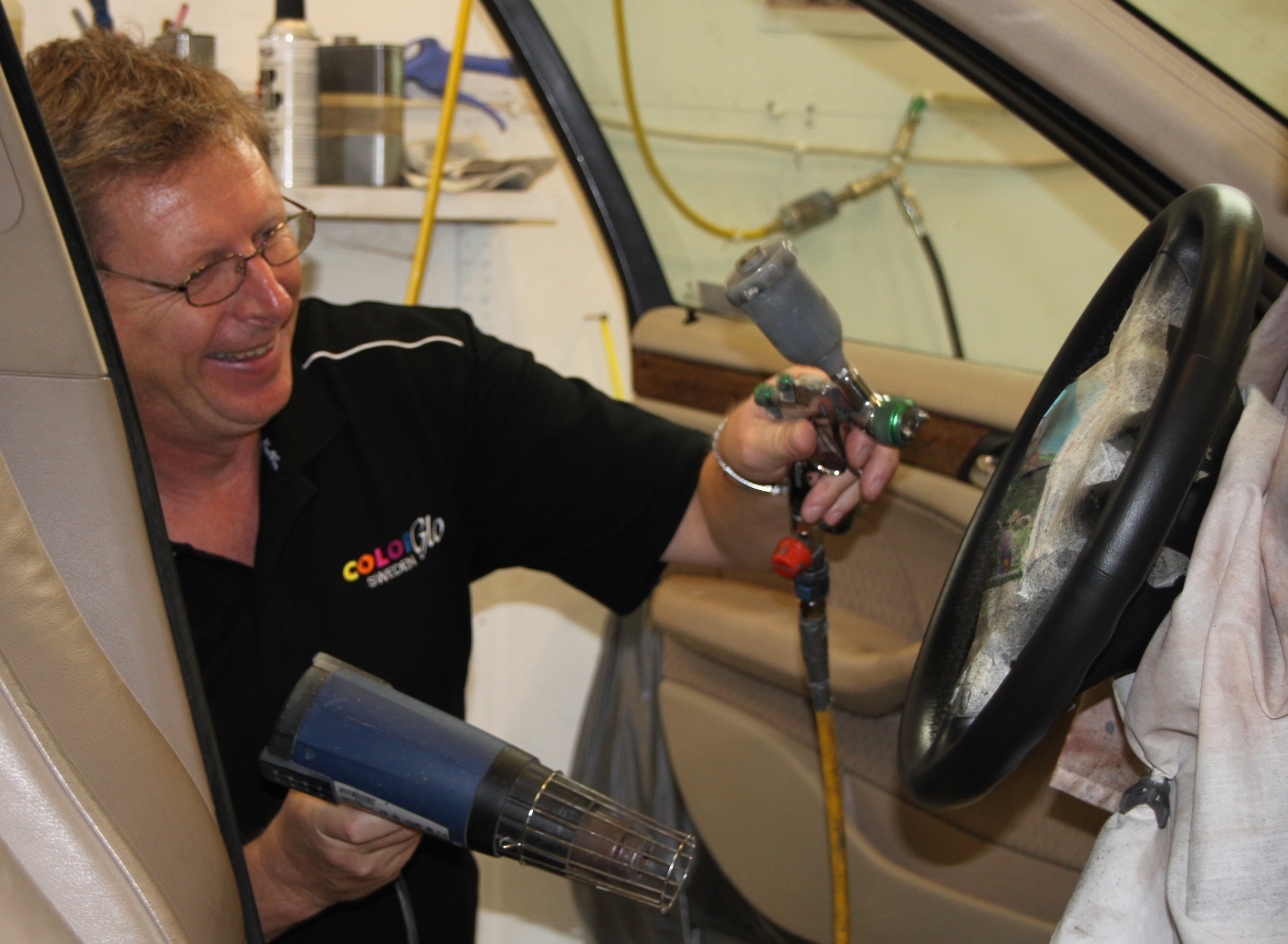
How To Clean the Exterior of Your Car Like a Pro
When it comes to washing your car, its a love/hate relationship. But as simple as washing your car may seem, there are some things to watch for so that you don't accidentally scratch or degrade the finish. Check out these tips.
How to wash your car
When it comes to washing your car, its a love/hate relationship. You either enjoy your vehicle as a hobby and it is your pride and joy or you hate the thought of even cleaning a floor mat and just assume it rot where it sits. So here are some tips for the enthusiast to clean your car's exterior like a pro.
Are there general guidelines I should follow?
Yes. If you're in the category of enthusiast and washing your car is chicken soup for your soul, then you know there are some things you need to think about. Washing your car can be easy and enjoyable and regular washing helps a new paint job keep its luster. But as simple as washing your car may seem, there are some things to watch for so that you don't accidentally scratch or degrade the finish. Below are some basic car-washing tips.
Shade is your friend. Your vehicle’s surface needs to be cool. If the car is hot, the soap suds will dry too quickly, staining the surface and requiring another wash. Enjoying washing your car goes as far as doing it one time on your afternoon off.
Pre-soak. Pre-soak your vehicle to remove grime, bug shrapnel, and heavy contaminants like rocks, water bottles, McDonald's wrappers and bunny remains.
DO use mild liquid soap and a soft car wash mitt or some other towel designed to respect your paint job's luster. Renew your water regularly.
Patience young Jedi. Many times, we just soap up the entire car and get to work. Negative ghost rider - wash one section at a time, and then rinse it off. You should start with the roof of the car, then proceed to the hood and the rear. It makes perfect sense to go top-down rather than create more work for yourself.
Next, clean the upper quarter panels, then move to the lower areas, including the rocker panels. The lower area of your car will always have extra "stuff" on it and the longer pre-soak as you work your way down will help eliminate this crud. The top to bottom sequence is also important because you run the risk of having small pieces of debris adhere to the mitt or sponge which may scratch your vehicle.Hose off your mitt! This is the toughest piece of advice because it is a human diligence requirement. We all want to just put the mitt or cloth back in our water and rinse it there while soaking up some more soapy water. This is bad! Always hose off your mitt or sponge before putting it back in the wash bucket to re-soap. Start with clean water and end with clean water. Dipping your dirty mitt into your bucket, just helps you apply the grime right back onto your automobile. If you've every wondered why the car is streaking while you're washing it, this may be your answer.
Rinse, rinse, rinse. Rinse your vehicle thoroughly and all over. When you feel satisfied and think you're finally done rinsing, go ahead and rinse it one more time.
Rims and tires. Your car washing drawer should have a few different mitts and cloths in it. We heavily suggest using a different mitt to clean the tires and rims of your car then the body. Using a separate mitt for the wheels will reduce the chance that you’ll scratch the car’s paint with brake dust and dirt you pick up from the rims. You'd be surprised how many people just use the same water and same mitts for washing and rinsing everything. You might as well drive right to the auto body shop when you're done.
Wheels. Ahhh, your pride and joy. Be very cautious when cleaning wheels, especially if you’re using a spray-on wheel cleaner. Wheels can be extremely hot if the car has just been driven or sitting in the sun. When you spray wheel cleaning chemicals on hot metal, the chemicals will vaporize and you will inevitably inhale them. Needless to say, this is not good for you health routine and depending on temperature and the chemical, you could cause some damage to products like Chrome or special coatings.
DON'T buy the pricey automotive cleaners. Instead, use a mild, liquid soap that is well diluted. This will accomplish everything you need, such as removing dirt, grease, and films without damaging plastics or other materials. Some people use household soaps but you also need to be careful to not use a harsh detergent. Stick to mild soaps and if possible find one that is safe for cars. The huge benefit is that it will cost you pennies over the heavily marketed auto detailing brands.
The drying process. Dry your vehicle immediately to prevent water spots. Chamois work very well and can help you move quickly through a vehicle that may have the sun on it.
What's next after I wash my car?
You should follow your wash process by waxing and cleaning the windows both inside and out. Applying wax to your car is like putting sunscreen on your skin. It adds a layer of protection from UV rays to prevent fading, as well as anything that may land on the paint.
You will be able to preserve your high gloss finish for a much longer span of time. You can find wax in a carnauba or polymer form. Both types of wax perform the same, but a polymer wax won't haze as it dries and can usually be wiped off soon after applying. The choice between using carnauba or polymer wax is similar to choosing synthetic or regular engine oil. A polymer is a bit more expensive but is easier to apply and some say performs better.
For the glass, the rules are pretty simple. Stay away from what you inherently want to do which is to grab Windex and other household glass cleaners. They can contain ammonia which can damage your car's window tint. Use an auto window cleaner for best results and wipe down twice to ensure the cleaner is removed. In a pinch, you can use a diluted white vinegar solution as it's a natural, low-cost, healthy household cleaner that should be fairly streak-free.
Last thoughts and tips...
Don't... move your sponge or mitt in circles. This can create light, but noticeable scratches called swirl marks. Instead, move the sponge lengthwise across the hood and other body panels. If you drop your sponge, rinse it thoroughly. Never reapply a sponge that has hit the ground or gone into polluted soapy water. Take that extra time to change out your bucket.
Maintain a shine. If you're going to lose sleep at night because the thought of pulling your freshly waxed car out to run an errand or (God forbid) go to work, then you may want to keep some supplies on hand to maintain your shine. There are several spray mists out there designed to remove daily debris and keep your wax job in top form. Toss this and a micro-fiber cloth in the trunk and you're armed and ready.
Headlights
For headlights that are sun-faded, full of crud, or just plain old, you can check out our guide on "How To Restore Your Car Headlights to New".
If your car is nearing that "vintage" stage or you just can't bear to part with it, but it's an eyesore, you may want to recondition it. You can read about the difference between detailing and reconditioning your car.
Should I Use Silicone Based Conditioners In My Auto Interior?
You should pass. Let's talk about out auto leather conditioner for a bit. Car leather today is the product of advanced engineering and manufacturing. It is highly resistant to wear and tear and daily use and abuse.
Top questions about cleaning leather
- Does my leather really need conditioning?
- What kind of conditioners are best?
- What about cleaning my car leather?
Color Glo specialists work to repair worn auto interiors and bring them back to life.
Starting With The Basics
With decades of experience in cleaning and refurbishing surfaces, we've learned a few things along the way. The single most important thing to remember is that we live in a marketing society that is overloaded with information - much of it incorrect. So how do you disect what is good and bad for you care interior, for your boat interior, for the health of your home, for your family... You catch our drift...
"In Our Opinion", based on experience
Research has only confirmed that leathers of today are not the leathers of yesterday. Hopefully, you've come to this same conclusion with many products in your life. Today's modern pigments, dyes and finishing processes have produced a car leather that is very resistant to the wear and tear that leather must endure inside the operating environment of our families, our jobs and our recreation vehicles.
This also means that the days of searching for the best auto leather conditioner are mostly a thing of the past. Since many of you may be "old dogs" and since old rules die very slow deaths, you will likely continue your search for the best auto leather conditioner that your money can buy, regardless of updated teachings.
Quest on my friend.
About cleaning leather interior
- Virtually all car leathers used today are finished with a clear protective coating that is applied for protection and durability of the leather. What does this mean? It means you will actually be cleaning, treating, or conditioning a clear protective layer that is made up of different types of resins, polymers, synthetics. The point is that you are not dealing with the actual leather, but the clear protective layer; just like the clear coat on your car paint.
- Keeping your car leather clean is the most important and critical part of the health and beauty of your car leather. In the experience of Color Glo professionals, keeping your leather clean and safe from elements consistently over the life of the car can keep your interior looking just like new 10 years later.
- With all that said, SOME auto leather conditioners can still play a role in the health and beauty of your car's leather interiors. Do your homework or ask your local Color Glo specialist.
So let's get to it
As mentioned, if you want your chariot to look clean and new for its lifetime, then weekly cleaning of its interior is a key point here, specifically for your leather. So what are the essentials?
Leather Care
Color Glo International specializes in leather cleaning and refurbishing.
If you have an older car, you just might have leather that is un-coated with modern day clear coats. Your high-end luxury exotic has a completely different technology behind it's leather pilot's seats than your 1964 Ford Fairlane that took you on Friday night pink slip laps around the neighborhood.
Silicone dressing for automobile interior.
You should pass. Let's talk about out auto leather conditioner for a bit. Car leather today is the product of advanced engineering and manufacturing. It is highly resistant to wear and tear and daily use and abuse. Most of us that are in our early 40's and beyond, remember the day of hard cracked leather seats, hot surfaces, and deep conditioning. Gone are these days.
The thoughts of massaging some magically engineered car leather conditioner into our car leather that can take it from a state of wear to gleaming new, is the stuff of legends. These philosophies still sit deep-rooted in our society's heads, but in reality, this is clever marketing to keep you buying into manufacturer's "kool-aid".
- Don't think you can apply auto leather conditioner without cleaning your leather first. The only exception is if your car is literally brand new. There will always be some form of dirt regardless of how clean your leather looks...so make sure you clean it first. Talk to your local Color Glo professional about mild cleaners that are designed to the job well.
- Cleaning your car leather only will leave it with a satin, or matte appearance. If you want it to have a little shine then a dressing or conditioner may be the way to go, but be warned about dressings. Ryan explains why below.
- Black or very dark leather interiors will typically have an inconsistent appearance after cleaning, making them more difficult to keep looking "like new". For this reason, we do suggest using a conditioner/dressing in most cases to create a perfectly even appearance after the cleaning process.
- As you may have noticed, humans get lazy and like to skip steps. So you might find yourself wanting to skip the cleaning part next time around and simply be seduced into applying a fresh coat of dressing. This will create a worse problem over time as you will be rubbing a fresh coat of dressing along with any dirt deeper and deeper into every area of your fine upholstery. Over time you will create a nice build-up of dirt and conditioners which will actually begin to deteriorate your automobile's protective top coat. Keep our number handy... you will need it. :-)
- Lastly, beware of the brands labeled as "long-lasting" or "water-resistant" as these silicone based dressings/conditioners will be difficult to clean completely off each time you do clean your car leather. Don't take the Tim Allen approach here form Tool Time and assuem that more is better. When it comes to dressings/conditioners, you actually want a product that will clean off easily each time and therefore allow for complete cleaning of your leather each time prior to a new application of conditioners.
Ryan Feeborn from Color Glo Oregon gives us his thoughts on silicone based dressings.
A few tips on auto leather conditioners
Just be smart and educated about your leather and auto interiors. Now that you're armed with a little bit of information based on real world experience, you can use the recommendations above to begin your own search. You may want to implement a schedule on your calendar if you're serious about protecting your investments. The "garage" or Man Cave schedule.
- Clean your car leather once a month. If done regularly, it's just minutes of your time. If you procrastinate, it's a much bigger job which requires some beer and complaining - maybe that's better for you.... A microfiber cloth dampened with cleaner and aggressive rubbing is all your particular car leather may require if done so regularly.
- Use a Color Glo leather conditioner if it makes you and your car leather feel a bit better about it all.
- Use a canned aerosol dressing after cleaning any colored car leather to create a nice sheen. This will provide a consistent appearance after cleaning your car leather. This auto leather conditioner/dressing will also address the black/dark colored leather/vinyl interiors issue mentioned above.
Motor On!
Top 4 Tips For Cleaning Marine Vinyl Interior
Marine grade vinyl is a type of vinyl that you should want in your vessel to withstand time, torture, and sun. The problem is that not all boats come with it. Check your sales guy.
Should I be careful when cleaning my boat?
Yes. Yes, yes and yes. You probably read our article on how to Bring Your Boat Interior Back to New, where we reminded you of the acronym B.O.A.T. ... But our Color Glo Specialists wanted to make sure you know the Top 4 Tips for keeping your boat interior in good shape.
You work hard to buy a boat and work harder to keep your boat looking good. You routinely put it in and take it out of the water, wash it, apply wax, and do your best to ensure it remains the boat of your dreams. Then it happens; one of our friends (hopefully invited) spills their adult beverage all over your well-kept carpeting, or they spill a cleaner or bleach on our vinyl seats and seams.
Proud boat owners know this feeling well and have learned to keep their watercraft "in the family" due to it. Boat ownership is exhausting as much as it is rewarding, so we thought we give you a few more tips on how to ensure your work pays off in the end.
Check your grades of marine vinyl.
Vinyl upholstery fabrics come in different grades, but this grade does not reflect fabric quality; it refers to the price it cost to make the fabric. You cannot find consistency in the vinyl fabric grading process because each manufacturer sets its own grades, much like tire manufacturers rate tires for speed without government or industry standards. So buyer beware...
Some boat interiors take a little more "TLC" than others...
Price grades range from "A" to "F," with the "F" grade representing the pricier fabrics. Rather than selecting vinyl upholstery fabrics by grade, choose the type of vinyl upholstery material you need according to its intended use.
Marine grade vinyl is a type of vinyl that you should want in your vessel to withstand time, torture, and sun. The problem is that not all boats come with it. Check your sales guy.
Cleaning your vinyl the right way
You might be tempted to spray bleach on your boat interior seats or use other harsh chemicals to try and mitigate some crude. JUST SAY NO.
Brenda from Great Lakes Color Glo in Michigan give us the scoop on great marine interior cleaning advice.
The process can be very simple if you take the time maintain your boat after each and every use. Just remember these quick tips.
Clean off the vinyl with a damp cloth first, removing salt, grime, dirt, and other debris.
Apply a thin layer of Vinyl cleaning material, such as the Color Glo Vinyl Clean that Brenda recommended above.
Rinse with fresh water, dry, and repeat as needed.
If you have deep mildew stains or other mold problems from improper care, a good firm brush may be needed along with a water/ammonia solution to break up the mildew growth.
How about UV protection?
Today, its a sales benefit as many people are aware they need UV protection - not only on their vinyl but our skins and everything else in our lives. The sun will beat your marine interior down and chew it up. So the question to ask is simply this:
Does my boat interior come with a high-grade vinyl that has UV protectant manufactured in?
If they answer is yes, then you're in really good shape by the time you've gotten to this question. If it doesn't, it's not the end of the world. You can still have high-quality interiors but have to use a Color Glo product to ensure your vibrant boat colors stay in check. Just contact your local Color Glo Specialist for advice.
Choose your personal UV block with caution!
What you put on yourself will transfer to your precious craft. Choose your sunscreens and sun oils wisely as some will stain or leave oily marks in your vinyl, which can be very difficult to remove. In today's market of more health-conscious consumers, your options for organic products, oil and paraben-free products and creams that boast not being greasy are numerous.
Choose wisely for the health of your skin and your boat's skin.
Lastly... Vinyl seats and covers on your boat are susceptible to drying, fading, and cracking. The sun, water, and regular wear and tear all age vinyl very quickly. Any vinyl on or in your boat should be regularly cleaned and protected to maintain it over the service life of our boat.
The worst enemy to vinyl is extended exposure to the sun's rays and dirt and grime/sand/dirt build-up. UV rays from the sun fade and dry vinyl out. Dirt and grime retain moisture on the surface and together cause the protective topcoat on vinyl to deteriorate, cause mildew or other mold problems.
The best advice we can give is to treat the boat like your own body. You clean it every day (hopefully) and brush your teeth. After every use of your boat, bring its livelihood back to new by brushing off seats and rinsing them, cleaning the interiors and exteriors and storing it with a cover to protect it from the elements.
Happy Boating!
Top 3 Questions to Ask Before Buying Leather Furniture
Are you thinking about buying leather furniture? Are you aware that there are different types of leather? Which one is the best fit for you? Answering some important leather buying questions before pulling out your wallet is the best decision you'll make for your home and for your family.
What should I ask when buying leather furniture?
Are you thinking about buying leather furniture? Are you aware that there are different types of leather? Which one is the best fit for you? Answering some important leather buying questions before pulling out your wallet is the best decision you'll make for your home and for your family. So what questions should you ask?
How is the leather finished?
Long-term usage is the first place to start; what usage patterns will your leather furniture see? If you have children and pets and the furniture is placed in a high-impact area with food, beverages, etc., this may cause a buying decision. If your leather furniture is more likely to be the centerpiece of a luxury home or single loft, then you may make a different buy decision.
Leather is incredibly durable and if you know How To Take Care of Your Leather Furniture, it can provide many, many years of comfort and elegance. However, the right type of leather should be selected based upon how you expect the furniture to be enjoyed. As leather furniture repair and restoration professionals, Color Glo specialists often hear from their clients how their salesperson or designer never told them the leather would stain, fade, tear, etc. You can avoid these problems by asking a few questions and knowing your leather beforehand. Some of the best interior designers are also brushed up on their leather/fabric knowledge and can guide you through this phase.
Finished.
Leather that is both dyed and pigmented is referred to as "finished". Finished leather is colored with the same aniline dye as unfinished leather, however, these hides go through a secondary coloring process. A pigmented coating (which is referred to as "finish") is applied, that has undergone some chemical engineering specifically for leather. It allows the leather to breathe and expand and is very different from the pigment in say, a wall paint.
Pigmented leather finishes are opaque, creating a colored film on top of the hide. The color coating is then augmented with a clear coat forming its primary protection. This clear coat also dictates the sheen, from the scale of gloss to matte. High-end finished leather may not feel as soft and supple (or luxurious) as unfinished leather, but it will be able to withstand the high-impact areas of your active household. Finished leather is much easier to clean, and fades very slowly, providing years of beauty without notice of wear.
Here are some types of finished leather:
- Aniline Finished: The most natural of finishes, colored mainly through the dying process, and light if any, extra finish is applied. This leather has a soft natural and luxurious feel. It is recommended for formal, light soiling areas only.
- Antiqued: Leather that is finished with one color over another (usually darker over lighter) so as to create rich highlights and an artificially aged appearance.
- Semi-Aniline: Aniline leather to which a matching pigment layer is added to even out the color and add protection.
- Pigmented Leather: Leather that has been spray or roller coated with a flat surface color on top of or instead of the usual dye finish. The leather is usually pigmented to add durability and hide natural blemishes. This type of leather is uniform in appearance and very resistance to wear. Recommended for high wear areas.
- Embossed Leather: Leather that has been "stamped" with a pattern applied by extreme pressure in a press to give a unique design or imitation of full grain characteristics. Sometimes leathers are embossed to make them appear to be another leather, such as embossing an alligator pattern into cowhide.
- Hand Antiqued: Also known as "hand rubbing". The process of skilled craftsmen hand-rubbing a contrasting color onto the surface of the leather to accentuate the natural grain and embossing.
- Oil or Wax Finish: Leather whose surface has been applied with oil or wax to create a soft pliable finish
Unfinished.
If you choose leather that is colored only with dye, then there is no protective coating. It is sometimes referred to as “pure-aniline” leather. The color of this leather is rich and deep and the dye penetrates deep into the leather. Often, these pieces are soft and supple to the touch, and the leather's natural beauty is accentuated by the dye, creating that feeling of luxury.
Only the finest leather hides can qualify to be unfinished, so unsurprisingly, it’s the most expensive category. The downside, however, to unfinished leather is that is stains easily, can tear more easily and can fade in very rapidly in some cases. So the question remains, "What does usage look like in your home?"
There are only 3 types of unfinished leather with variations of what has been done to the surface.
- Full Grain Leather: This is leather in its most natural form with its surface left untouched by sanding or buffing.
- Full-grain leather can be embossed or dyed without damaging the natural fibers.
- Less than 20% of all hides are suitable for use as full grain leather.
- This type is expensive and is used only for the highest quality leather finishes.
- Full grains vary based on different origin, thickness, and tanning process.
- Corrected Grain Leather. The surface of the leather has been sanded to minimize natural imperfections.
- It can also be dyed and embossed with an artificial grain.
- This is the most common type of leather used.
- Nubuck. Nubuck is brushed grain sueded leather. It has been lightly buffed or sanded to produce a very fine, soft leather with a textured, suede-like appearance.
How is it constructed? Is the leather top-grain leather?
Budget is key, we know... Sometimes price just dictates where we land. Top-grain leather is will definitely be on the top of the heap when it comes to cost but it will be the most durable. So if your home analysis sits in the high-traffic category, you may want to justify the price of top-grain leather for your furniture.
Top-grain is the epidermis of the skin which offers the vast majority of the hide’s durability. Split-hide leather (leather “split” from the epidermis) won’t stand up to the test of time in an active household. As a lower grade it is generally more affordable if your budget is dictating it. If you want your piece to potentially last a lifetime, then you must save pennies for top-grain leather.
Construction of the furniture is also a key point. We've all owned low-budget furniture at some point in our lives and the first thing to happen is the frame starts to wobble and pull apart. Pressed wood frames, cheap construction, and poorly machined templates will equal a short-term saving and long-term struggle. Furniture solutions like Ashley and Ikea, though wonderful for many applications, are not the best solutions when it comes to permanently adorning your home.
Lastly, is it all leather?
You heard that right... is it actually all leather? Or did the manufacturer sneak in some vinyl? Vinyl has a handful of fancy name derivatives like leatherette, leather-mate, leather–match (and there are more) is synthetic. It is not the real deal and it won't stand the test of time like the real deal.
It's less expensive than leather, but it won't feel or wear like real leather. The durability will not be there, nor will the luxurious touch and fell of a fine leather furniture piece. And yes, you guessed it; some manufacturers will sip some vinyl into various pieces to drive down their cost.
So the key to buying leather furniture for your home is to know what you're looking at. With so many options, like every other category in life these days, you have to be educated on what you're spending your money on. Just remember these three questions when shopping for leather or when working with an interior designer and you should get steered in the right direction:
- How is the leather finished?
- How is the leather and furniture piece constructed?
- Is it constructed of all leather?
Types of leather information found at Helvetia




